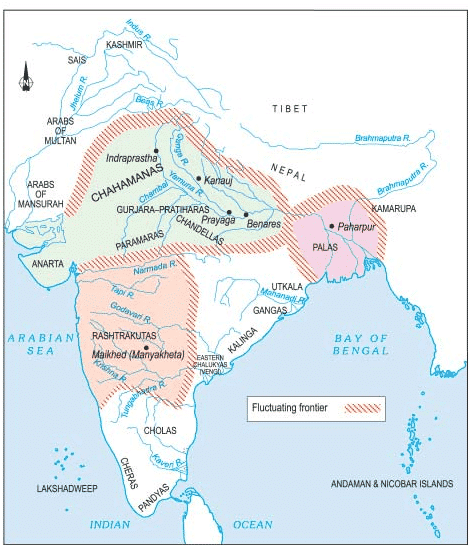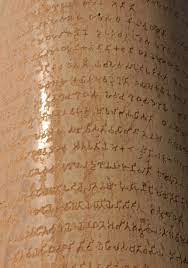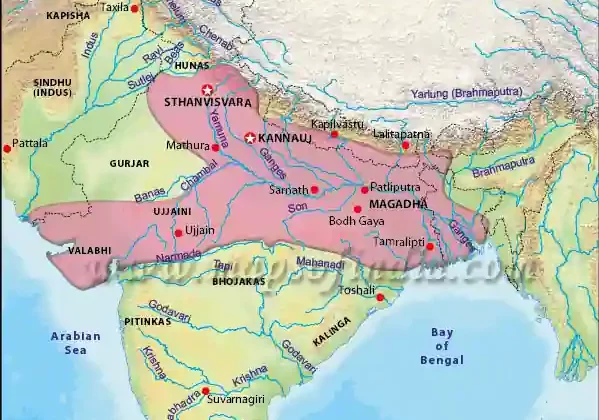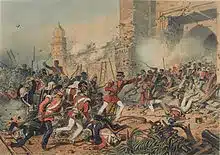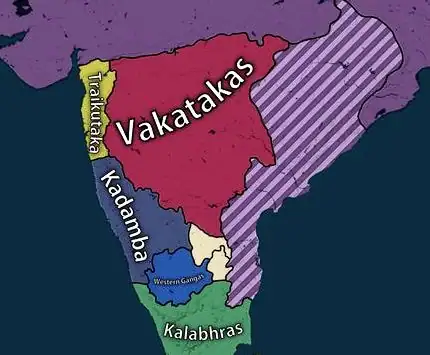Indian Stone Age
- The credit for doing an early extensive study of Indian pre-history goes to Robert Bruce Foote, who discovered what was probably the first palaeolithic tool discovered in India — the Pallavaram handaxe.
- On the basis of geological age, the Indian Stone Age is classified primarily into three types:
- Old stone Age, Palaeolithic Age (5,00,000−10,000 BCE): Handaxe and clever industries
- Late Stone Age, Mesolithic Age (10,000−6000 BCE): Tools made on Flakes
- New Stone Age, Neolithic Age (6,000−1000 BCE): Tools made on Flakes and Blades
- This is a general time range as there is a variation in the dates for different sites. e.g. in Africa old stone age started from 2 million BC while artefacts from Bori (Maharashtra) suggest the appearance of human beings in India around 600000 years ago.
- The suffix lithic indicates that technology in these periods was primarily based on stone.
- Economically, the palaeolithic and mesolithic periods represented a nomadic, hunting-gathering way of life, while the neolithic period represented a settled, food-producing way of life.
- The invention of agriculture, which took place about 8000 years ago, brought about dramatic changes in the economy, technology and demography of human societies.
- Human habitat in the hunting-gathering stage was essentially on hilly, rocky and forested regions, which had ample wild plant and animal food resources.
- The introduction of agriculture saw it shifting to the alluvial plains which had fertile soil and perennial availability of water.
- Hills and forests, which had so far been areas of attraction, now turned into areas of isolation.
Homo habilis to Homo sapiens
- The first important Homo or human was Homo habilis found in eastern and southern Africa about 2–1.5 million years ago.
- Homo habilis means a handy or skilful man. This first real human broke the stone into pieces and sharpened the latter to use as tools.
- The second important step saw the appearance of Homo erectus dating to 1.8 to 1.6 million years ago. Homo erectus means an erect or upright man. They discovered how to make and use fire, In sharp contrast to the Homo habilis, the Homo erectus travelled long distances. Their remains have been found not only in Africa but also in China, South Asia, and Southeast Asia. (Here the most important point is that fire was discovered by Homo-Erectus).
- The third step marked the emergence of Homo sapiens, which means wise man. Our own species evolved from Homo sapiens. It resembles the Neanderthal man found in western Germany around 230,000–30,000 years ago.
- The full-fledged modern man called Homo sapiens sapiens is traceable to about 115,000 years ago in southern Africa in the late Stone Age called the Upper Palaeolithic.
Palaeolithic Age (Hunters and Food Gatherers)
- The Palaeolithic Age is the earliest period of the Stone Age, which developed in the Pleistocene period or the Ice Age. The Evolution of Earth Crust shows four stages; the last stage is called quaternary which is divided into Pleistocene(ice age) and Holocene(post-ice age).
- Pleistocene: 2 million BC to 12000 BC
- Holocene: 12000 BC and continues to this day
- Spread in all parts of India except the alluvial plains of the Indus and Ganga.
- They belonged to the Negrito race and lived in caves and rock shelters.
- They were food-gathering people who lived on hunting and gathering wild fruits and vegetables.
- They had no knowledge of agriculture, house building, pottery, or any metal.
- It was only in later stages that they attained the knowledge of fire.
- Man, during this period, used tools of unpolished, undressed rough stones — mainly hand axes, cleavers, choppers, blades, burin, and scrapers.
- They are called ‘Quartzite men’ in India because their tools were made of quartzite.
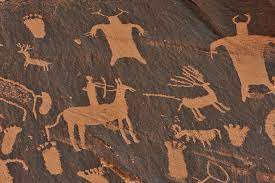
Lower Palaeolithic
- Use of hand axes, choppers, and cleavers, mainly for chopping, digging and skinning.
- Found in Soan and Sohan river valley (now in Pakistan), Kashmir, Thar Desert (Didwana, Rajasthan), Hiran Valley (Gujarat), rock shelters of Bhimbetka (MP), and Belan Valley Mirzapur(UP), Chirki-Nevasa in Maharashtra, Nagarjunakonda in Andhra Pradesh, Bhimbetka near Bhopal
- 5,00,000 BCE−50,000 BCE
- The lower palaeolithic period covers the greater part of the Ice Age.
Middle Palaeolithic
- Use of stone tools made of flakes, mainly scrapers, borers, points, and bladelike tools.
- Found in Soan, Narmada and Tungabhadra river valleys, Potwar Plateau (between Indus and Jhelum).
- Some of the most important sites of the Middle Palaeolithic period are Bhimbetka, Nevasa, Pushkar, Rohiri hills of upper Sind, and Samnapur on Narmada.
- 50,000 BCE −40,000 BCE
Upper Palaeolithic
- Parallel-sided blades, burins, and some instances of bone tools.
- Found in Andhra Pradesh, Karnataka, Maharashtra, Central MP, Southern UP and Chhotanagpur Plateau.
- Bone tools were found only at cave sites of Kurnool and Muchchatla Chintamani Gavi in Andhra Pradesh
- 40,000 BCE−10,000 BCE
- Homo sapiens first appeared at the end of this phase.
- Coincided with the last phase of the Ice Age, when the climate became comparatively warm and less humid.
Mesolithic (Hunters and Herders) Age
- This period is marked by the transition from the Pleistocene period to Holocene and favourable changes in the climate. The climate became warmer and humid and there was the expansion of flora and fauna contributed by increased rainfall. This led to the availability of new resources to humans.
- Mesolithic man lived on hunting, fishing, food gathering, and in later stages, also domesticated animals.
- One of the key aspects of the Mesolithic Age was the reduction in the size of well-established tool types.
- The characteristic tools of this age were microliths (miniature stone tools usually made of crypto-crystalline silica, chalcedony, or chert, both of geometrical and non-geometrical shapes).
- Pottery is absent at most Mesolithic sites, but it is present at Langhnaj in Gujarat and in the Kaimur region of Mirzapur (UP).
- The last phase of this age saw the beginning of plant cultivation.
- The Mesolithic era initiated rock art in prehistory. In 1867, the first rock paintings in India were discovered at Sohagighat (Kaimur Hills, UP), others are Bhimbetka Caves, Kharwar, Jaora, and Kathotia (M.P.), Sundargarh and Sambalpur (Orissa), Ezhuthu Guha (Kerala) etc. •Animals dominate the scenes at most Mesolithic rock art sites. However, no snakes are depicted in Mesolithic Paintings.
Important Mesolithic sites are:
- Bagor, Rajasthan on River Kothari is one of the largest and best-documented Mesolithic sites in India.
- Chhotanagpur Region, Central India.
- Both Adamgarh, M.P. and Bagor provide the earliest evidence for the domestication of animals
- South of River Krishna, Tinnevelly in Tamil Nadu, Birbhanpur in West Bengal, Sarai Nahar Rai, near Allahabad, Pratapgarh area Mahadaha, U.P., where bone artefacts are found, including arrowheads and bone ornaments.
Neolithic (Food-Producing Stage) Age
- In northern India, the Neolithic age emerged around c.8000−6000 BCE.
- The Neolithic age in the Indian subcontinent began around the seventh millennium BC.
- The Neolithic man cultivated land and grew fruits & corn like ragi and horse gram (kulathi) and domesticated cattle, sheep, and goats.
- The Neolithic man innovated in the production of stone tools, producing implements such as polished, pecked, and ground stone tools.
- The Neolithic era communities first made pottery by hand and then with the help of the potter’s wheel.
- Their pottery included black burnished ware, grey ware, and mat-impressed ware.
- It can therefore be said pottery on a large scale appeared in this phase.
- The emergence of self-sufficient village communities:
- In the later phases of the Neolithic era, people led a more settled life.
- They lived in circular and rectangular houses made of mud and reed.
- They also knew how to make boats and could spin cotton and wool and weave cloth.
- Division of labour based on sex and age:
- As society was progressing, the need for additional labour was recognised and thus labour was procured from other non-kin groups too.
- The importance of the Neolithic period is huge. V. Gordon Childe even termed the Neolithic phase as Neolithic Revolution.
Important excavated Neolithic Sites:
- Burzahom (unique rectangular chopper, domestic dogs buried with their masters in graves) and Gufkral in Jammu and Kashmir (famous for pit dwelling, stone tools, and graveyards located within households)
- Maski, Brahmagiri, Piklihal (proof of cattle herding), Budihal (community food preparation and feasting), and Tekkalakota in Karnataka
- Paiyampalli in Tamil Nadu and Utnur in Andhra Pradesh
- Garo Hills in Meghalaya,
- Chirand in Bihar (considerable use of bone implements, especially those made of antlers). Neolithic cultures in Bihar have also been found at Chechar (Vaishali), Senuar (Rohtas), Maner (Patna), Taradih(Bodh Gaya) and Barudih (Singhbhum).
- Mehrgarh (the earliest Neolithic site known as the Breadbasket of Baluchistan,)
- Belan Valley near Prayagraj (evidence of all the three phases of Paleolithic settlement, followed by Mesolithic and Neolithic settlements).
PRE-HISTORIC ART
- Remnants of rock paintings are found in the rock shelters located in Bhimbetka near Bhopal.
- Several other sites are situated in several districts of Madhya Pradesh, Karnataka, Uttar Pradesh, Andhra Pradesh and Bihar.
- The paintings were carved on the walls of caves with sharp weapons.
- The paintings mainly consist of man’s struggle for survival. Hunting scenes pre-dominate.
- Paintings have 3 motifs- MAN, ANIMAL and GEOMETRIC PATTERN.
- Green and red colour paintings are found in Bhimbetka caves.
- Community dancers provide a common theme.
- Some of the pictures like women and children depict a kind of family life.
Also, refer :

